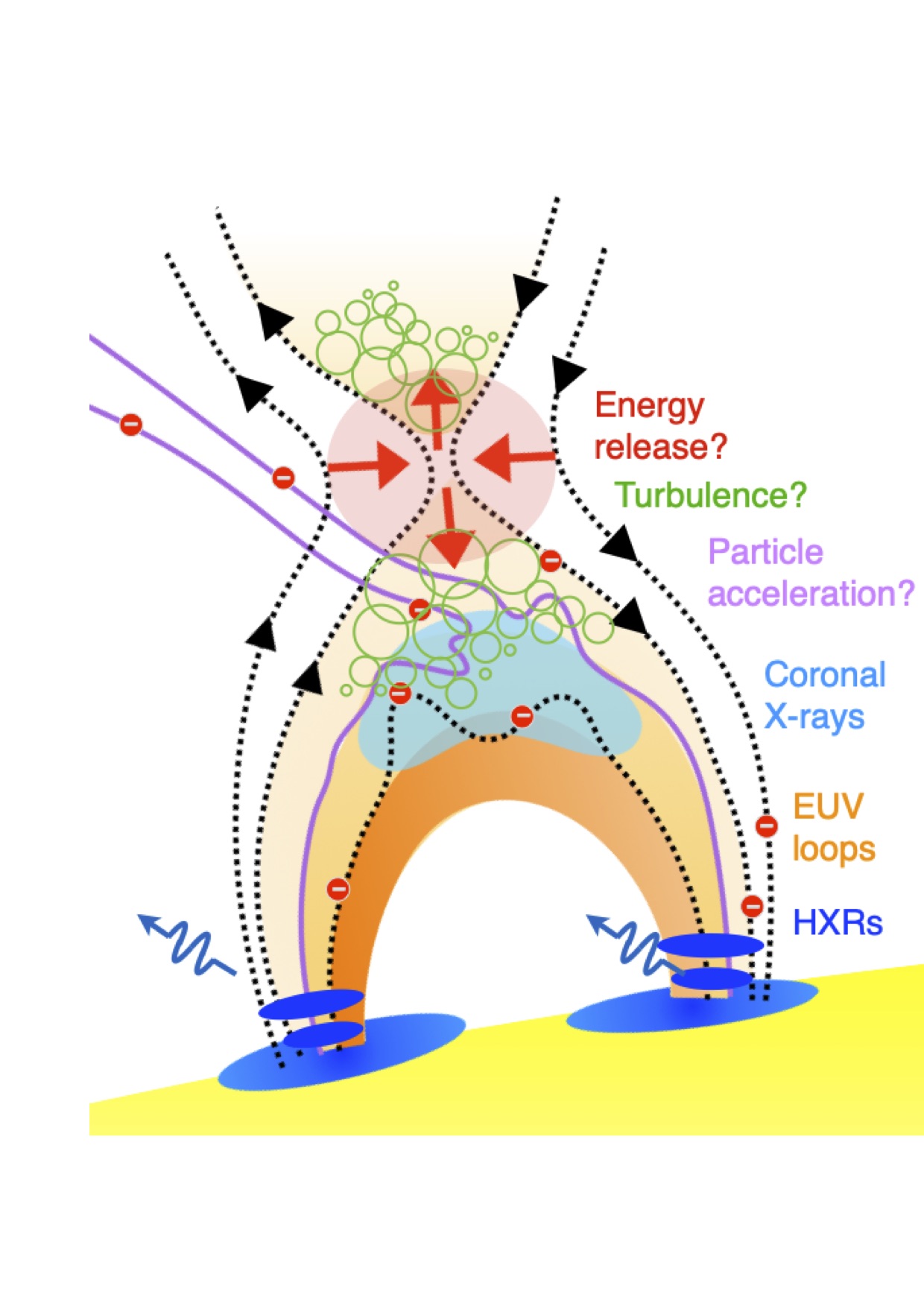
Jeffrey, Natasha L. S., Pascal Saint-Hilaire, and Eduard P. Kontar, Probing solar flare accelerated electron distributions with prospective X-ray polarimetry missions, A&A, 642, A79 (2020) (ADS)

(click on the image for a larger version)
Date: 2020 October 18
A comprehensive CSHKP-style model, now showing the possibility of particles finding open field lines (purple) to escape from a turbulent acceleration region, as denoted by the bubbles. The paper analyzes the polarization signature that could help define this picture; the blue disks at the chromosphere (yellow) would have directed beams of electrons that could emit linearly polarized hard X-rays.
This nice cartoon, with excellent attention to perspective, also illustrates how SEPs can escape from the flare into the heliosphere. At first glance this may seem impossible, especially when viewed in 2D. But the purple field lines don't actually intersect the dotted black ones, and find their way out of the flare in a suitable 3D manner that remains to be described. Can many particles escape this way? Note the requirement that the three question marks need all to get answered positively, in series, and then one can ask about the additional model-dependence of finding enough purple field lines connecting into the heliosphere. This may well work out, though, and this cartoon may be consistent with models of particle escape from "flare reconnection" current sheets. Turbulent fields might help.